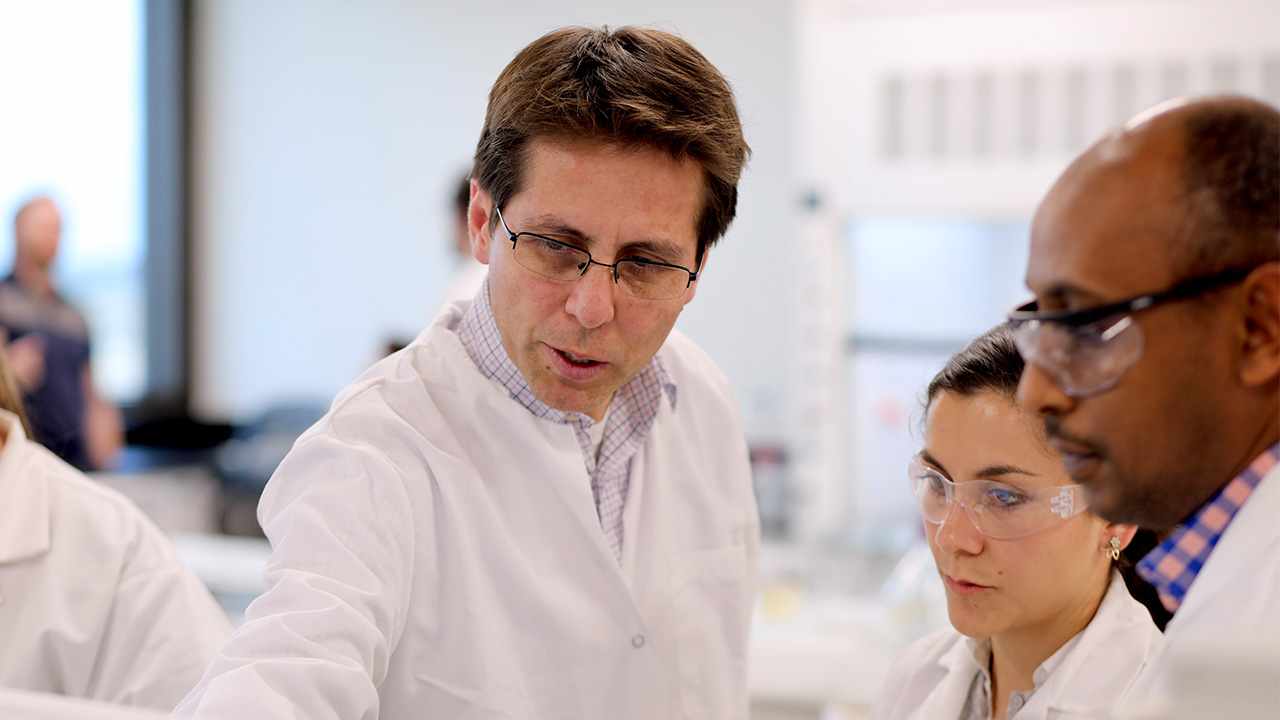Ready to Innovate?
Learn about different research areas and opportunities that are available in the College of Engineering!

On a bright and pleasant day in mid-May, one of the best activities is to go around cherry ranches and taste those ripe and sweet cherries directly picked by you. Sometimes, however, the cherries are not so sweet after all. As there are no refunds once you enter the ranch, judgment plays a vital role. Just like cherry picking, a research career as a Ph.D. student is an amazing experience, but requires careful consideration.
In the professional world, you can switch companies if you find something more interesting compared to your current job. However, in your Ph.D. program you are stuck with your decision, advisor expectations and constant pressure of deliverables. If you work to balance these factors, your doctoral program can be a fruitful experience.
Students consider pursuing a Ph.D. for multiple reasons such as funding, job prospects or career paths. Whatever your motivation may be, it is essential to pick an interesting project and an advisor who can guide you to be your best. So how do you decide?
Step 1: Finding your passion
A Ph.D. sounds attractive and most, if not everyone, of us have what it takes to attain one. The difference comes in the passion that helps to hold your plan together for a number of years. After deciding you want to pursue a Ph.D., take time to find a topic that gives you enough energy to get through the sleepless nights.
One of the best ways is to read about the topic that catches your attention. Keep reading random articles online as it may be too early to dive into research publications. As you read, you either subconsciously pull away or spend more time with it, depending on the topic. That urge to spend more time with a particular topic is a sign of first love, but it is too early to commit at this stage. As you spend some time reading, reach out to industry professionals. Talk about your plans and ask for their guidance. In the end, rank your topics of interest while you go through the next steps.
Step 2: Choosing your career path
This step is usually done parallel with the previous. The answer to this question decides the type of research group you wish to join. Of course, plans change over the course of a doctoral duration, but anything begun is half-done.
Usually, you either pursue academia or industry after your Ph.D., so you need to understand the requirements to get into your prospective career path. For academia, you need to prioritize publications (with a number of citations), teaching and project management experience. In industry, the focus is mostly on the number of projects with best results, relevance to current applications, team player experience and similar traits. Make a list of the requirements that suit your future plan.
Step 3: Choosing an advisor
Once you have the list of topics and requirements for your chosen career path, it is time to shortlist your advisor choice. Among the many passionate professors in the field, only some will fit your criteria. Time to make another list and go through each professor’s research website. This step takes a bit of work, but it makes your life easier during your doctoral program.
Important things to consider when reviewing professors’ research groups: the publications and their impact, alumni career progress, diversity, collaborations with industry or research labs and availability of courses related to your topic of interest. These factors may reduce your list to only a handful.
Next, contact each group individually regarding current openings and expectations from students. Try contacting the current students either from the research group website or via LinkedIn. Ask about work life, what conferences they attend, and any direct contacts with alumni. If you are in the same location as one of the alumni, try meeting in person to discuss your plans. They can help you decide if the group is a good fit for your interests.
Prepare questions to ask your prospective advisor, if invited for an interview. The most common issue is not hearing back from your emails. To avoid that, make sure your email is concise and to the point. Follow up once in seven business days. Express your interest by discussing specific current projects instead of vague, general statements such as, “I am interested in working in your group.”
Once you figure out most details about each research group, it is time to apply. Always have options because it is not a 100% guarantee that you will get to join the group that aligns best with your interests. Finally, just like Steps 1 and 2 are parallel, there is a parallel to Step 3.
Step 4: Deciding on a research project
Most of the time, you don’t have control over your choice of project. However, as you work through Steps 1 and 2, those projects should stay consistent with the topics and type of groups. So it really doesn’t matter what particular project you are working on if you are in the right place and the work relates to your topic of interest.
When you talk to a current or former member or the head of a research group, be upfront and discuss the type of projects you want to work on. If they do not work on those projects, it will save you a lot of time. Best of all, they may suggest groups that actually work on the projects you like. With their permission, you can mention their reference to begin conversations with other groups. It is a continuous loop of questions and answers until you satisfy your goal for finding the best group.
Sometimes during your Ph.D. work, a particular project seems directionless, but that doesn’t mean you picked the wrong project. It is important to discuss your thoughts with your advisor. Most advisors are approachable when it comes to discussing ideas and thoughts with their students because they know the importance of the right mindset in the workplace. It can also help you avoid mental issues due to lack of progress as it is highly common to get stuck along the way in a project.
Finding your passion starts with a spark of thought, and can happen when talking to fellow engineers.
Most conferences have a free expo pass where you can meet a lot of engineers. As you converse, multiple ideas could pass through your mind. Begin with Step 1 for each idea. Some ideas may be not so new, but keep listening. Evaluate the relevance of the idea to the industry or academia and gauge the alignment with your career interests as discussed in Step 2. Keep the discussion going to learn about professors working along the lines of your idea and short list using Step 3. Be honest with yourself and pick a research group that works on projects you want to work on by following Step 4. Before you know it, years have passed by and you’ve become one of the best researchers or engineers as you follow a streamlined process in search of your passion. It will always be a bright and sunny day as you collect all the good cherries with immaculate judgment.

Electrical Engineering
If you found this blog post interesting, you may consider reading “Struggling to find things to do outside research? Here are some ideas to change that.” and “Hobbies: An outlet for your busy life in grad school and beyond.“
